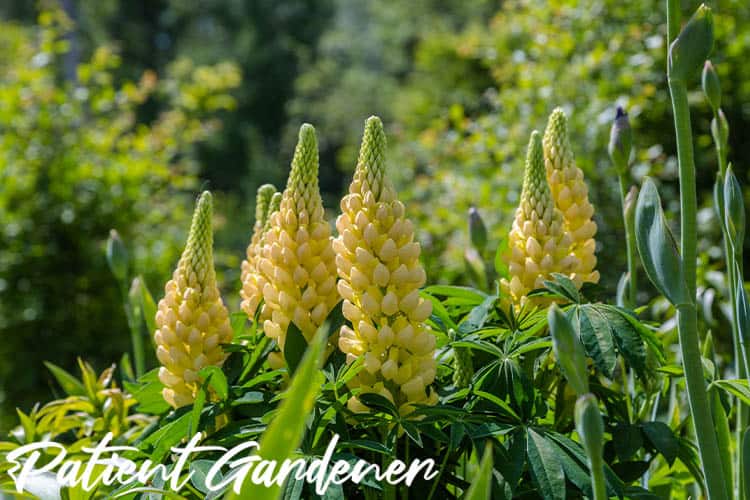How long do lupins last?
If you have been enjoying the blooms on your lupins for a few years now then your mind may start to wander and wonder how much longer you will be able to enjoy this plant. After all how long do lupins last? Let’s have a look and find out and also see if there is anything you can do to make your lupins last longer.

How long do Lupins last?
Lupins are not a hugely long-lived perennial, with great care and the perfect growing conditions they can last 10 years, however, expect most lupins grown in British gardens to survive around 6 years.
When they start to get around 5 years of age you will notice the bloom size and number start to diminish. The pant begins to grow more woody and overall is much less appealing than a younger plant. For this reason, I usually grow and plan my lupins around a 4-5 year lifespan.
Always have a mind on growing new plants to take over the older ones in your border. They are not a tough plant to grow so this isn’t really much of a problem at all.
Dividing and replanting
Once your lupins begin to show their age you can still salvage them. Digging, splitting and replanting can revitalise your lupin plants and give you another 3-4 years of beautiful displays.
Cutting lupins back
In Autumn lupins should be cut right back to the base, this will help prolong the life of your lupins. We have a full guide on this process you can find here.
How to tell if my lupin is on its way out
When lupins are ageing they will start to put out fewer and smaller flower spikes. You will also notice that they start to go a lot woodier than they once were. This doesn’t have to be the end though, try digging up, splitting and replanting your lupin to reinvigorate it.

Growing New Lupins
If you have a lupin in your garden that’s getting old and you want to grow a new version of it then don’t grow it from seed. Lupins don’t seed true to colour so the new plant you grow, even if the seed is taken from that flower, may not have the same coloured flower.
Lupins tend to go more blue/purple if allowed to self-seed. So if you want to keep the same colour then you have two options. You can take a cutting from the lupin and grow this, this will stay true to colour.
Alternatively, you can dig up the lupin and divide the rootstock in order to grow more plants.

Lupins
Lupins are a beautiful flower that you will find in many British gardens. Lupins are a staple of British cottage gardens, famed for both their height and colour.
Originally hailing from the Mediterranean they are a perennial that will greet you with a gorgeous summer display year after year. They produce a large flowering spike that is full of colour and each plant can have lots of these spikes leading to a fabulous display.
They will begin to flower around may and can last well into June. The flowers do go to seed quite quickly but your lupin will continue to produce more and more new spikes. To get the best out of these spikes though it is essential to deadhead the old spikes to give the new ones a chance to flourish.







